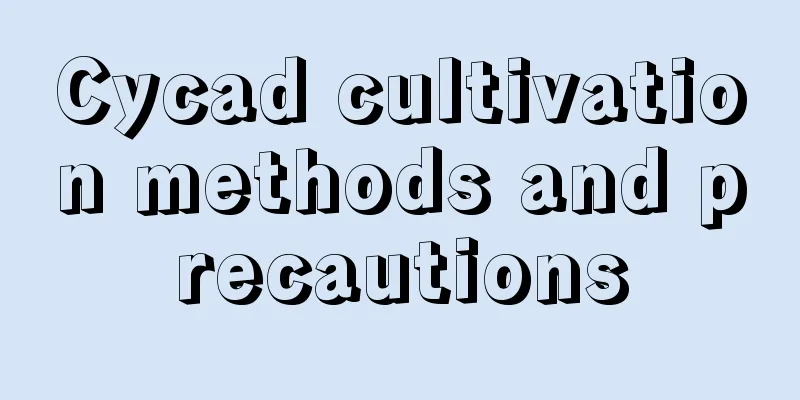Cycad cultivation methods and precautions

1. Maintenance methods1. Temperature: Cycads like warmth. Generally speaking, the most suitable temperature is between 20 and 28 degrees. Its cold tolerance is not very good. Therefore, in winter, you need to pay attention to keeping warm. Try to keep it around ten degrees, which is relatively safer. 2. Light: Cycas is a light-loving plant. However, it also has a certain tolerance to shade. Therefore, it can be placed in semi-shaded or diffused light areas. However, do not place it in complete darkness, and do not place it in strong light. 3. Watering: Cycas revoluta has a certain degree of drought resistance, but it is afraid of waterlogging. During its growth stage, you can water it a little more to promote its growth. Don't water too much in winter. 4. Soil: Cycas has some requirements for soil, such as nutrition, air permeability and drainage. The good quality of soil helps its growth rate. 2. Breeding techniques1. Repotting: It needs to be changed at least once every five years. You can choose leaf mold as the main soil, and then add some base fertilizer, such as bone meal, into it. When repotting, it is best to choose a time when the temperature is suitable, preferably around 15 degrees. Generally speaking, it is good in spring and autumn. In addition, the aging roots must be cut off. 2. Pruning: When the height of the plant grows to about 50 cm, the aging leaves need to be cut off. After that, this treatment needs to be done every three years. Performed in spring. In addition, some unsuitable branches, such as dry and aging branches, must also be pruned in time. 3. Problem diagnosis and treatment1. Disease: "Spot disease" may occur, which mainly harms the leaves. It is caused by bacteria. First, some brown spots appear on the leaves, then the spots gradually merge into one, and then the color will also change. It can be prevented by using thiophanate-methyl. In addition, you also need to clean up the fallen leaves around you in time. 2. Pests: There may be scale insects. You can wipe the leaves with alcohol or spray insecticide directly. IV. Other issues1. Toxicity: Cycad itself is non-toxic. However, its seeds contain toxins. 2. Can it be raised at home: Of course. It is ornamental and also has a purifying effect. However, you need to find a larger space to place it. |
<<: Cultivation methods and precautions of Oxalis
>>: Mangosteen cultivation methods and precautions
Recommend
Pest and disease control of purple echinacea
Root rot This disease is relatively common and ma...
Leaf cutting propagation method of tiger skin plant
1. Cut the leaves The leaves used for Sansevieria...
How to care for Cotinus coggygria bonsai
About the making of tree shape Cotinus coggygria ...
Gardenia cuttings steps, Gardenia cuttings time
1. Cutting steps 1. Cut branches: When taking gar...
Polygonatum sibiricum planting technology
1. Site selection When it comes to growing Polygo...
How to Plant Safflower Seeds
Introduction of safflower seeds Generally, the se...
How to cultivate osmanthus seedlings, pictures of osmanthus seedlings
1. Prepare the soil It likes to grow in loose, we...
When is the time to graft grapefruit?
1. Spring Fruit trees are usually grafted in the ...
What water to use for watering green radish
1. Rice washing water Rice washing water contains...
How to plant Jade Fan with leaves
1. Reasons for choosing leaf cuttings Leaf cuttin...
How to breed hybrid azalea
1. Soil Hybrid azalea prefers fertile, loose, sli...
Jade leaves pruning
1. Pruning time The Jade Plant has a strong abili...
Does okra like shade or sun? What are okra's requirements for light?
1. Do you prefer shade or sun? Okra is a light-lo...
What are the effects of evergreen
Dieffenbachia is a common foliage potted flower w...
Grape planting conditions and temperatures are suitable for planting areas
Grape planting conditions When planting grapes, y...









